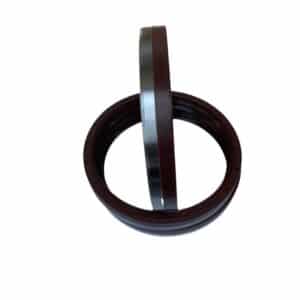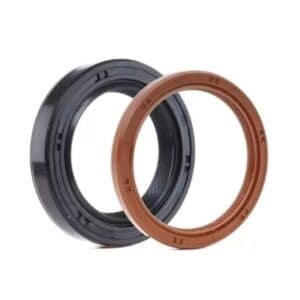Choosing the correct O-ring material is crucial for ensuring optimal performance and longevity in sealing applications. EPDM and FKM are two prevalent elastomers, each offering unique advantages. This guide delves into their differences to help you make an informed decision.
EPDM excels in outdoor and water-based applications due to its resistance to weathering and steam, while FKM is ideal for high-temperature and chemical-resistant environments.
Understanding the distinct properties of EPDM and FKM O-rings will enable you to select the most suitable material for your specific needs.
What Are the Key Differences Between EPDM and FKM O-Rings?
EPDM and FKM differ significantly in terms of chemical compatibility, temperature resistance, and application suitability.
EPDM is highly resistant to water, steam, and weathering, making it suitable for outdoor and water-based applications. FKM offers superior resistance to oils, fuels, and high temperatures, making it ideal for chemical processing and automotive applications.
Chemical Compatibility:
| Chemical | EPDM Compatibility | FKM Compatibility |
|---|---|---|
| Water | Excellent | Good |
| Steam | Excellent | Fair |
| Oils and Fuels | Poor | Excellent |
| Acids and Alkalis | Good | Excellent |
Temperature Resistance:
- EPDM: -50°C to +150°C
- FKM: -45°C to +204°C
Applications:
- EPDM: Water systems, outdoor equipment, automotive brake systems.
- FKM: Chemical processing, oil and gas pipelines, high-temperature automotive applications.
Which O-Ring Material Offers Better Weather and UV Resistance?
When it comes to weather and UV resistance, EPDM outperforms FKM.
EPDM exhibits excellent resistance to ozone, UV rays, and general weathering, making it ideal for outdoor applications. FKM, while resistant to many chemicals and high temperatures, does not offer the same level of protection against environmental factors.
For applications exposed to sunlight and varying weather conditions, EPDM is the preferred choice due to its durability and longevity in such environments.
How Do EPDM and FKM O-Rings Compare in Terms of Cost and Durability?
Cost and durability are critical factors in selecting O-ring materials.
EPDM is generally more cost-effective and offers good durability in water-based and outdoor applications. FKM, while more expensive, provides superior durability in high-temperature and chemically aggressive environments.
Cost Comparison:
- EPDM: Lower cost, suitable for general-purpose applications.
- FKM: Higher cost, justified by its performance in demanding conditions.
Durability:
- EPDM: Excellent in outdoor and water-based applications.
- FKM: Exceptional in high-temperature and chemical exposure scenarios.
What Are the Typical Applications for EPDM and FKM O-Rings?
Understanding the typical applications can guide material selection.
EPDM O-Rings:
- Water systems (plumbing, irrigation)
- HVAC systems
- Automotive brake systems
- Outdoor equipment
FKM O-Rings:
- Chemical processing industries
- Oil and gas pipelines
- High-temperature automotive components
- Aerospace applications
Explore our EPDM O-Ring products and FKM O-Ring products for more information.
Conclusion
EPDM is ideal for applications involving water, steam, and outdoor exposure, offering cost-effectiveness and durability. FKM is suited for high-temperature and chemically aggressive environments, providing superior resistance and longevity.
Contact Us for Expert Advice
📩 Email: [email protected]
📞 WhatsApp: +86 17622979498
Related Topic
- EPDM O-Rings Selection Guide
- FKM O-Rings for High-Temperature Sealing
- What Are O-Rings & How They Work


